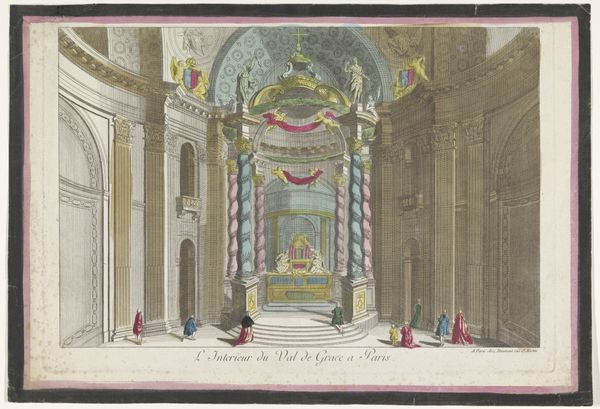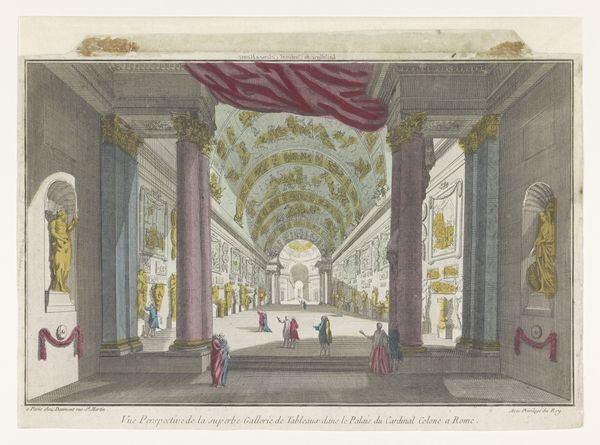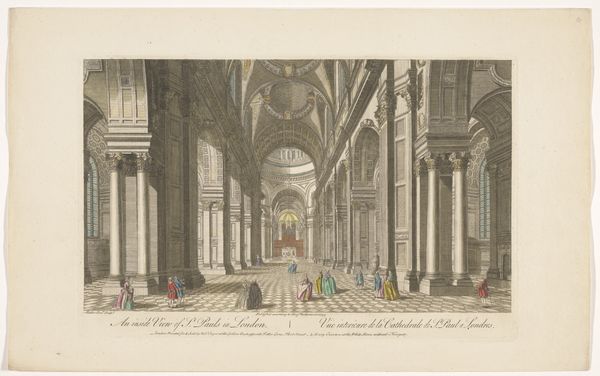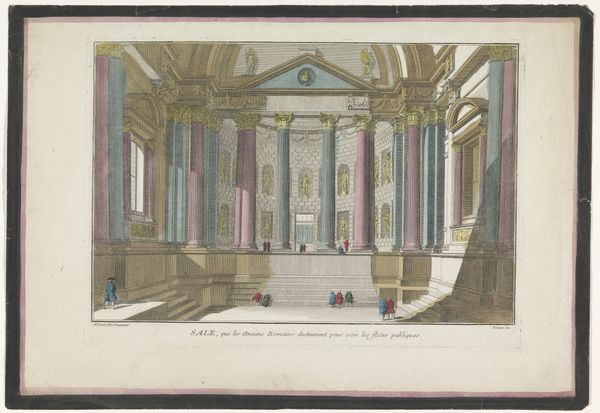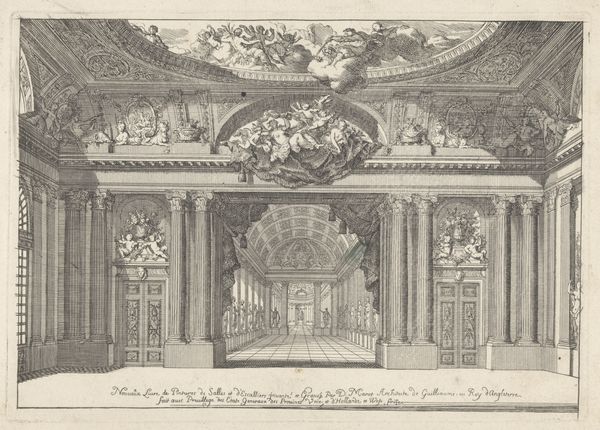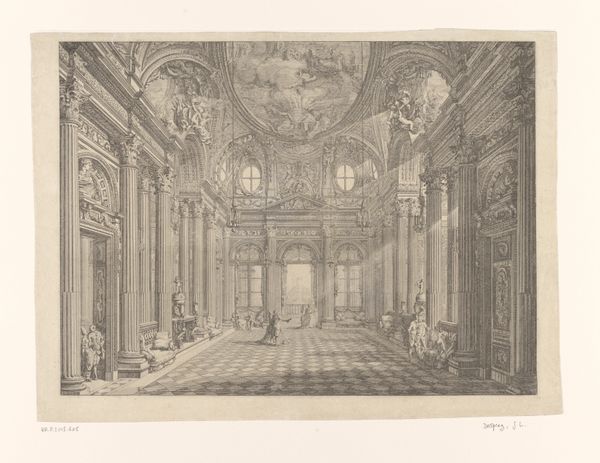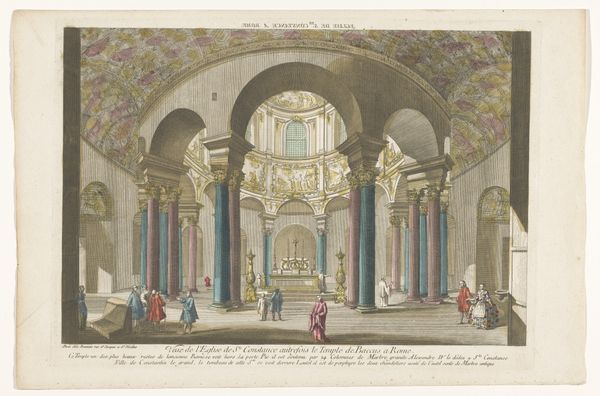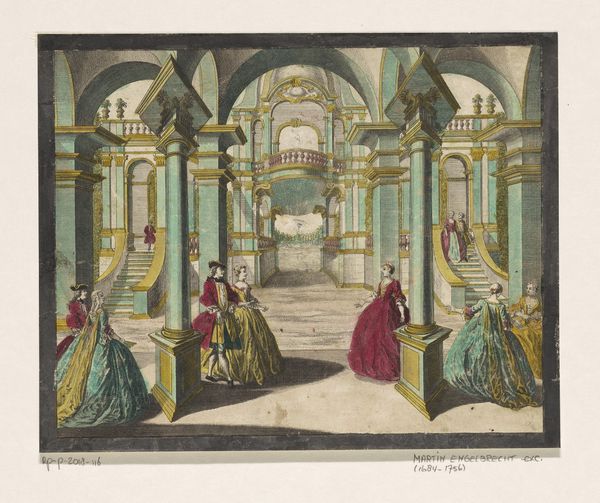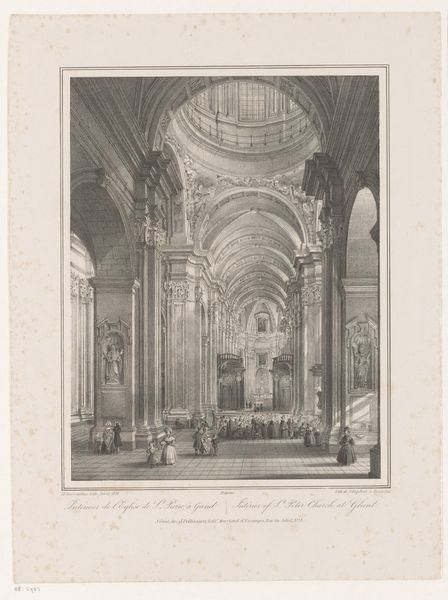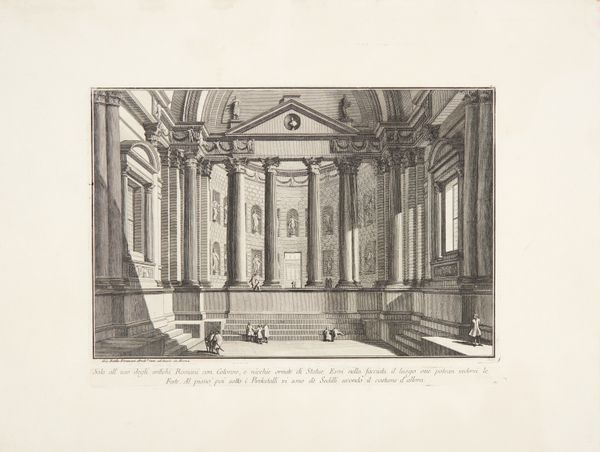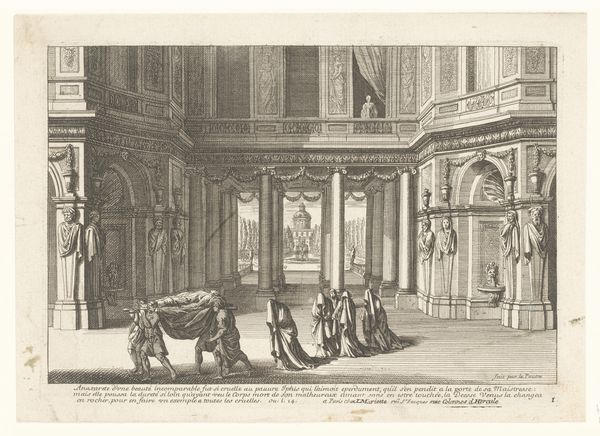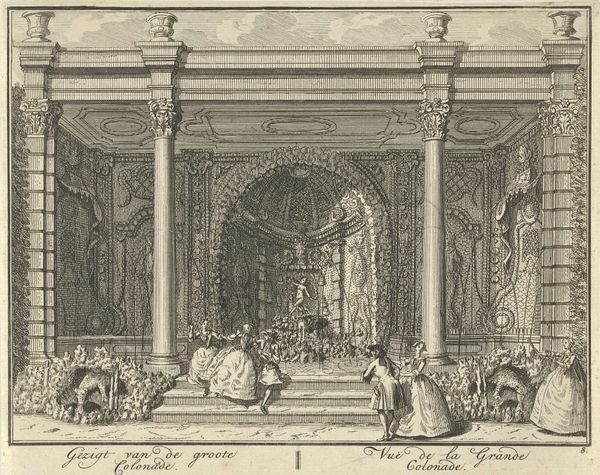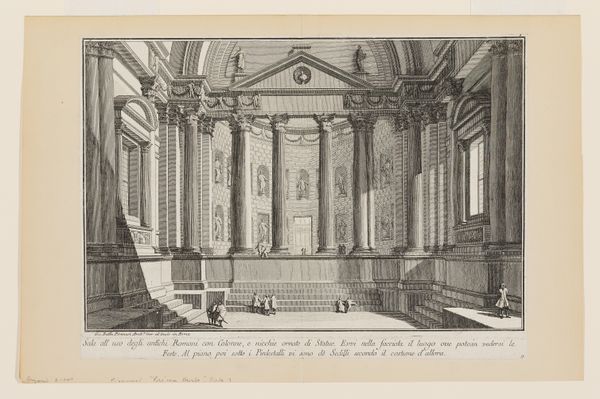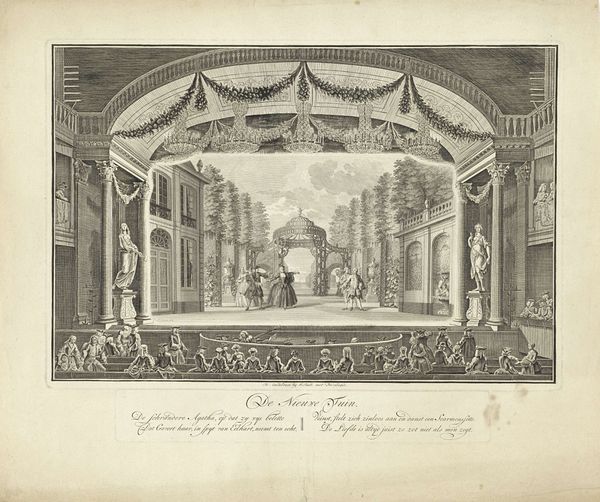
Gezicht op het interieur van de kerk Val-de-Grâce te Parijs 1745 - 1775
0:00
0:00
jeanfrancoisdaumont
Rijksmuseum
#
historical design
#
imaginative character sketch
#
traditional media
#
retro 'vintage design
#
personal sketchbook
#
historical fashion
#
watercolour illustration
#
cartoon style
#
cartoon carciture
#
cartoon theme
Dimensions: height 292 mm, width 427 mm
Copyright: Rijks Museum: Open Domain
Editor: This is "Gezicht op het interieur van de kerk Val-de-Grâce te Parijs" by Jean-François Daumont, made sometime between 1745 and 1775. It looks like a watercolor, and I'm really struck by the depiction of this grand church interior. It almost feels stage-like. What stands out to you about this work? Curator: What captures my attention immediately is the clear emphasis on the material conditions represented. Note the meticulously rendered architectural details: the towering columns, the gilded decorations, and the very deliberate construction of the space itself. All are reflections of considerable material wealth and labor. Consider the social context. Who commissioned such grandeur? What sort of power is displayed through such lavishness, in both construction and representation? Editor: So, you're focusing on how the image itself is communicating about power and resources through what's depicted. Curator: Precisely. The building's architecture isn’t just for show; it’s also a result of labor. How did these materials travel? Who crafted the ornate details? By paying attention to the physical presence within the frame and how that translates into society, we can read Daumont’s depiction less as a snapshot of devotion and more as a documentation of an era steeped in consumption and constructed social hierarchies. What choices did Daumont make in depicting people in this place of worship? Editor: Well, the figures are so small compared to the scale of the building, almost like afterthoughts... Curator: Exactly. That contrast amplifies the material presence over the human. Considering these perspectives of labor, production, and the social impact of art definitely enhances our appreciation for understanding it. Editor: I see that it provides a richer perspective than just seeing pretty columns. Thank you. Curator: My pleasure, it has provided a great challenge to see how such questions help to contextualize history.
Comments
No comments
Be the first to comment and join the conversation on the ultimate creative platform.
